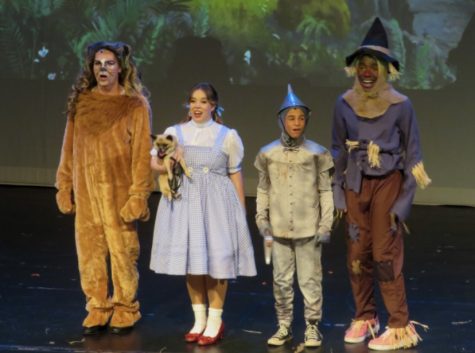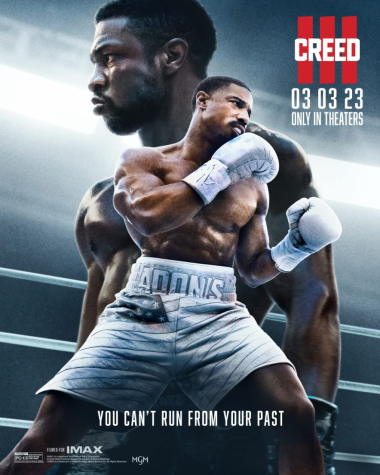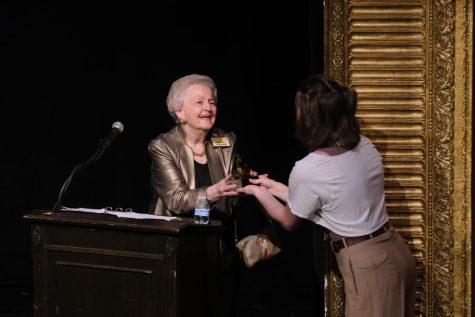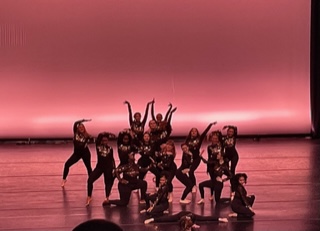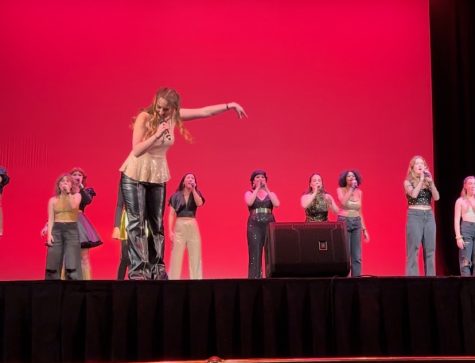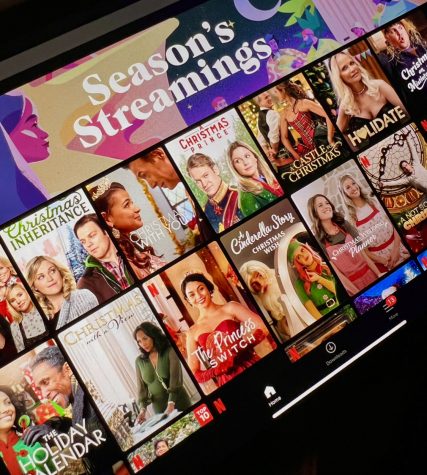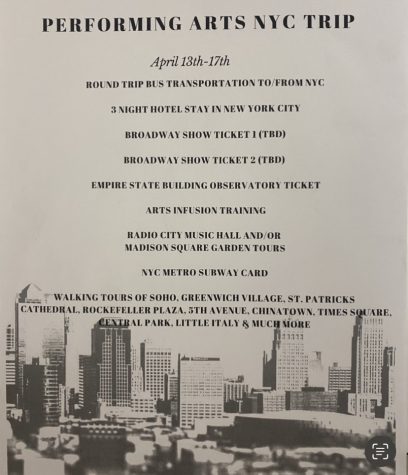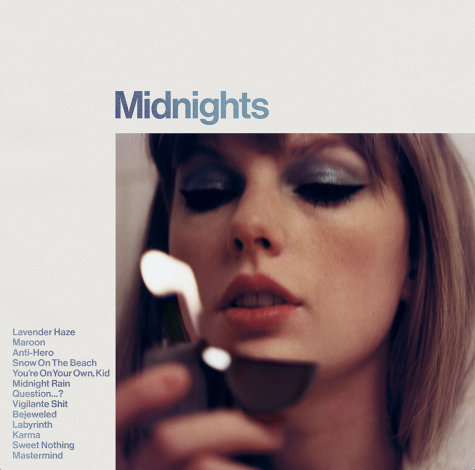How to master the rom-com formula

March 14, 2023
I don’t trust anyone that doesn’t like romantic comedies. A particular layer of misleading reality covers a true rom-com, a glossy sheen telling you this could be real. Maybe, I’m just a hopeless romantic. But perhaps I’m just another victim of the rom-com formula in action.
The rom-com formula makes the glossy sheen I was talking about oh so shiny. It has eight main ingredients, all used to make girls swoon and guys secretly enjoy the movies. The eight ingredients include the “meet-cute,” “rough patch,” whimsical jobs, marvelous cities, zany side characters, “epiphany,” “big betrayal” and “kiss-in-the-rain.”
The formula starts with a “meet-cute,” an intriguing situation where our two love interests meet. Technically, the term originates from a 1938 film called Bluebeard’s Eighth Wife, where characters Claudette Colbert and Gary Cooper meet while shopping for pajamas. Colbert is looking for a top, and Cooper is looking for bottoms. How cute!
This exact example is mentioned in the 2006 rom-com The Holiday when the character Iris offers to give her neighbor Arthur a ride home. In the car, Arthur says, “well, this was some meet-cute,” He then explains to her the meaning of the term and uses Bluebeard’s Eighth Wife to give context. Iris and Arthur owe it all to that “meet-cute,” as they ultimately end up together.
The next step in the equation is what I call the “rough patch.” In the 2003 rom-com How to Lose a Guy in 10 Days, characters Andie Anderson and Benjamin Barry aren’t exactly at odds, but things aren’t working out. Anderson, an advice columnist, decides to push her talents and write a story about how to get a guy to leave you in 10 days (title drop anyone?). The night Anderson goes to a party in an attempt to find the guy she will base her article on, Barry happens to be there making a deal with his boss that he can make any woman fall in love with him in ten days.

Because of her article, Anderson tries to repel him as much as possible, and Barry tries to put up with her. Hilarity ensues. Anderson pulls out all the stops, including moving her things into his apartment, buying him a fern and a Chinese Crested dog to represent their relationship, and surprising him with Celine Dion tickets (instead of Knicks tickets). Barry still can’t seem to walk away as he works to make her fall in love with him. It’s not until Barry tries to break up with her at his boys’ poker night that his friends convince him to try couples counseling.
Another critical aspect of the rom-com formula is the setting. Most rom-coms are in big marvelous cities, and these cities are almost always New York City. The most iconic New York City setting appears in the 1989 rom-com When Harry Met Sally. Accentuated with autumn tree leaves and park benches, this movie has the most romantic background. Some honorable mentions of rom-coms with New York settings include 13 Going on 30, You’ve Got Mail and Serendipity.
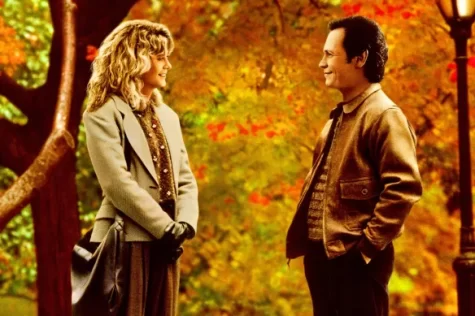
As for the whimsical jobs I mentioned earlier, it was not until recently that I understood why this niche feature is common for many rom-coms. If you’re confused by what I mean by “whimsical,” let me give you a few examples. In the 2009 rom-com 500 Days of Summer, the main characters, Tom and Summer, meet while working for a greeting card company, where Tom writes greeting cards, and Summer is an assistant. There are also a lot of chefs in rom-coms. Spanglish, What to Expect When You’re Expecting and The Devil Wears Prada all have love interests that are chefs. The reasoning for such weird jobs is that they add another layer of wonder to a rom-com. Although there is seemingly nothing romantic about being a cook, the job helps the rom-com seem even more sweet and exciting.
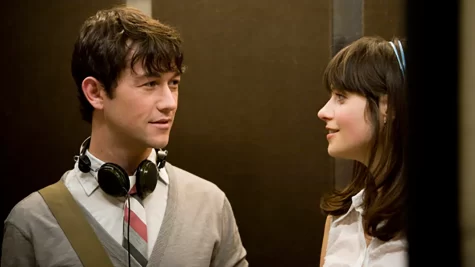
For some reason, zany side characters are always present in good rom-coms. In My Best Friend’s Wedding, it’s George, Damian in Mean Girls; and in the 1986 rom-com Pretty in Pink, the side character Duckie really should’ve been the guy who gets the girl. This is probably an argument for a select audience, but Duckie should’ve ended up with Andie instead of Blane. Duckie wore crazy outfits with John Lennon sunglasses and always looked out for Andie. What did Blane do? Pick her out at a record store.
My favorite element of the rom-com formula is what I refer to as the “epiphany.” This is when the couple really sees each other for the first time. The best rom-com scene is in the 2008 film 27 Dresses when characters Jance Nichols and Kevin Doyle have their “epiphany” in a bar after they get caught in a rainstorm in Rhinebeck, New York. Nichols and Doyle sing “Bennie and the Jets” in the bar and epically share their first kiss. What makes this scene so great is the rawness and aversion to antics. For a moment, we take a step back from the outlandish narrative and see the characters as they are: falling in love.
What follows is a temporary tragedy: The “big betrayal.” In Crazy Rich Asians, a 2018 rom-com, this happens when characters Rachel Chu and Nick Young are pulled apart by Young’s disapproving mother, Eleanor. Mrs. Young dislikes Chu and forbids her son from seeing her. The climax of this story occurs when Mrs. Young exposes Chu by hiring a private investigator, revealing that Chu’s father is alive and her birth resulted from an extramarital affair. Chu flees the scene and spends the next few days locked in her room, depressed. Although it hurts to watch, the “big betrayal” always thickens the plot and gives a reason for the final step in the rom-com formula.
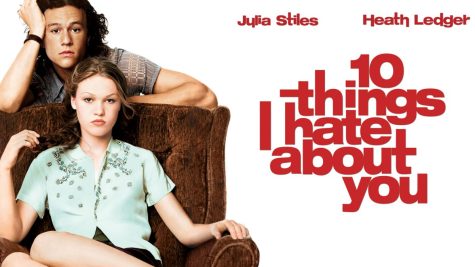
The final scene is always the same for every rom-com; the guy gets the girl after realizing what an idiot he has been. This is what I call the “kiss in the rain.” In the 1999 rom-com 10 Things I Hate About You, characters Kat Stratford and Patrick Verona have their “kiss in the rain” after Stratford reads aloud the poem she wrote confessing her true feelings for Patrick. Heartbroken over Verona’s betrayal, Stratford lists the ten things she hates about him, with the last one being how much she doesn’t hate him at all. After the dramatic reading, Stratford walks to her car to find the guitar she wanted sitting in the front seat. Verona appears, saying he’s sorry, and the two kiss as “I Want You to Want Me” by Letters to Cleo starts playing.
There’s no actual conclusion to this story. Hopefully (if all has gone smoothly) there’s no conclusion to any rom-com, and our couples are still happily together.




